Oryx Desert salt brings Taste, Health and Social Good to Your Gourmet Experience
Oryx Desert Salt Taste
In the crowded world of salts and condiments, Oryx Desert Salt is working hard to separate itself from the crowd and more and more people are noticing.
Come have a taste and a closer look….
Oryx Desert Salt has a heightened taste, even when compared to other gourmet options. Subtle, yet bold. It adds a zest to the bite while being gentle on your palate. A finishing salt who’s magic is pulling out an extra bit of dimension from most dishes.
I tried it on poultry, rib eye and salmon. Bringing out the juice and flavor. Each time the taste was noticeably enhanced.
With its distinctive flavor profile using less salt will achieve that enhanced flavor and Oryx is still going, creating more exclusive flavored salts for exciting new taste experiences

So far I’ve only sampled their white salt, but judging by that experience, I’d LOOOVE to try their variety.
“Salt is the smallest ingredient in any meal yet it has the biggest impact”
Oryx Desert Salt’s Flavors
SMOKED SALT – cold smoked over French Oak shavings
WINE SALT – soaked in Shiraz red wine and sundried
BRAAI/ BBQ SALT – free from additives, flavourants, preservatives, wheat or gluten fillers.
Oryx Desert Salt’s Health Benefits
Oryx Desert Salt has all the essential minerals and trace elements that exist naturally in salt, including magnesium, zinc and potassium.
It’s 100% pure, crystal-white, natural desert salt. Sun-dried, unrefined, no additives, no anti-clumping agents, no preservatives. Dried by the hot African desert sun.

Why is this important? To really understand, let’s put on our science lab coats and get into the specifics.
There are two elements of salt – sodium and chloride – and they each play vital roles to your healthy body.
Sodium helps your nervous system, controls your taste, smell and touch, helps your muscles (and heart) work and helps your brain talk with the rest of your body.
Chloride is key for digestion and helps keep your blood moving.
Okay, science class is over.
But, yeah, that’s how important salt is to us. And how important Oryx Desert Salt recognises their role.
Some of us, honestly, haven’t put that much thought into what kind of salt we’re using. And now we know we should.
The Oryx Desert Salt Story
Back in the Summer of 2020 inspiration struck CEO / Founder Samantha Skyring when she took a 7 day walk through South Africa’s Namib Desert.
During the journey, she had several up-close encounters with Oryx Gazella (large antelopes) and learned the Oryx go a lifetime without drinking water.
How do they survive it?
The salt plays a big part. The animals get the necessary minerals and trace elements vial by licking native salt.
If you look on Oryx Desert Salt’s packaging, you’ll notice the Oryx, with its striking coloring and presence, because became the symbolic icon for Oryx Desert Salt.
Oryx Desert Salt Cares About Our World
They support small, local businesses, build partnerships and advocate for eco-awareness.
Oryx Desert Salt believes in impact sourcing which is choosing to source locally where possible and supporting small, often women-owned businesses.
They also work to build collaborative relationships (from their chefs, cooking schools and beyond) seeing them as valued ambassadors.
Their cotton bags, aprons and shopper bags are manufactured by a women’s home industry community group.
They partner with organizations like the Ukama Foundation, Macassar Pottery, Khomani San and Mier communities who own !Xaus Lodge in the Kgalagadi Transfrontier Park in the Kalahari Desert.
Where To Buy
Available at Whole Foods throughout the county, on Amazon and on their website here.
YOU MIGHT ALSO LIKE
LA Shorts: Filmmaker Erin Gavin Brings Twists, Turns and Deep Love to Video Games with “Gaming For Love” — See it July 22
LA Shorts: Filmmaker Erin Gavin explores Love and Video Games with “Gaming For Love” — See it July 22
“Gaming for Love” is a poignant narrative inspired by true events which follows the journey of Maisie, a young girl battling cancer, as she finds solace and strength in the world of online gaming.
“Gaming For Love” screens at LA Shorts Monday July 22.
Erin Gavin’s career has spanned over motion pictures, television series, theatrical
productions, print and live-action commercials.
Erin’s other film credits include “Dread”, “The Last Investigation”, “Junk,” and most recently played the Iconic star Marilyn Monroe in a hit stage production.
Erin signed with Serdica Record (Classical contemporary) label and her first song ‘I’m through with love’ has been a global success.
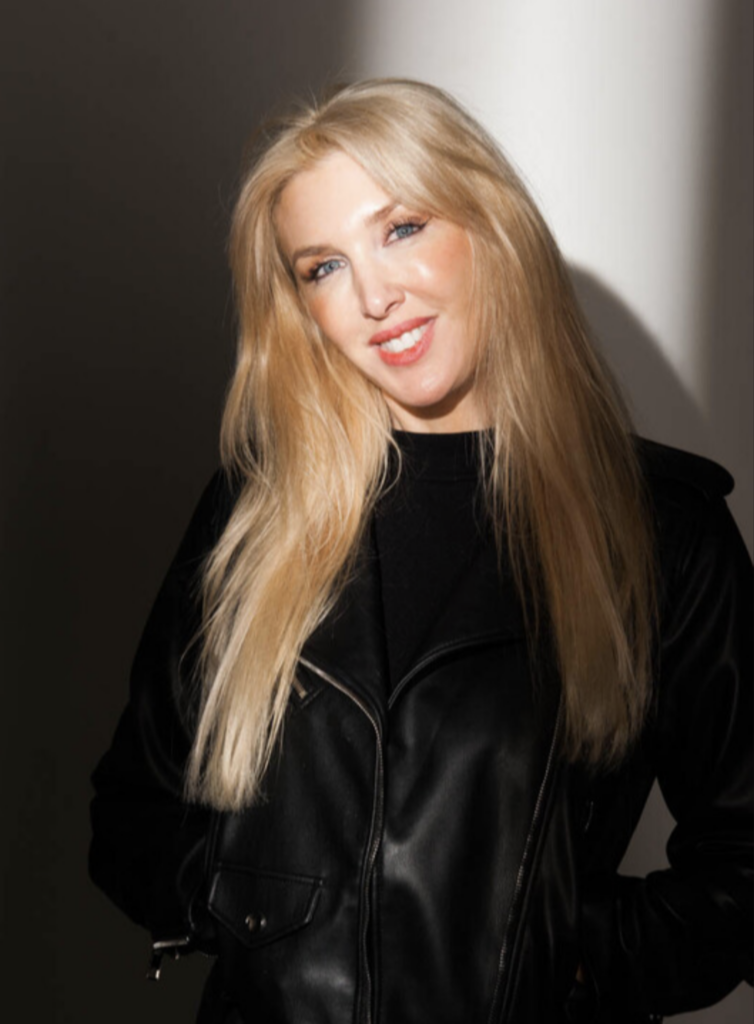
“Gaming for Love” Filmmaker Erin Gavin
Through themes of love, sacrifice, and the power of human connection, “Gaming for Love” beautifully illustrates the profound influence of gaming in Maisie’s life and the bonds forged beyond the confines of the digital realm.
Today’s conversation with Erin Gavin from “Gaming For Love” has been edited for length and clarity. For the full, un-edited conversation, visit our YouTube channel here.
Joe Winger:
We are back today with Erin Gavin, the writer, producer, and director of short film Gaming for Love. Erin, thanks for joining us today.
Erin Gavin:
Thanks for having me. This is brilliant, Joe. Thank you. Appreciate it.

Joe Winger:
My pleasure. I’m looking forward to learning more about you and sharing your message with the audience today.
You direct, you produced, you wrote this; and it’s a very powerful short film Gaming for Love. What’s the most important message you want to share with our audience today?
Erin Gavin:
So for me, the reason I wanted to tell this story is because it’s loosely based on true events. I felt this wave of emotion come over me when I was reading this article and I thought, what an amazing, powerful real loving story.
I just felt compelled to tell it.
From that thought to where we are today feels absolutely incredible. So I’m very grateful.

Joe Winger:
You’ve done a lot of prolific work, both in front of the camera and behind the camera. On stage, on screen, with music.
What inspired you to choose this project next for you?
Erin Gavin:
Other filmmakers will probably relate to this. But it just felt right. There was no part of me that was hesitant not tell this story. Every part of me just said that’s it. This is the story. This is what I’m doing. It’s happening. That was really it. There was no ifs, and’s, but’s, maybe’s about it.
Joe Winger:
That’s very courageous. We often hear so much glamour about Hollywood. But behind the scenes, the production itself isn’t always so easy.
So without giving away any plots or any spoilers, what was one of the biggest challenges of your production? And how did you solve that challenge?
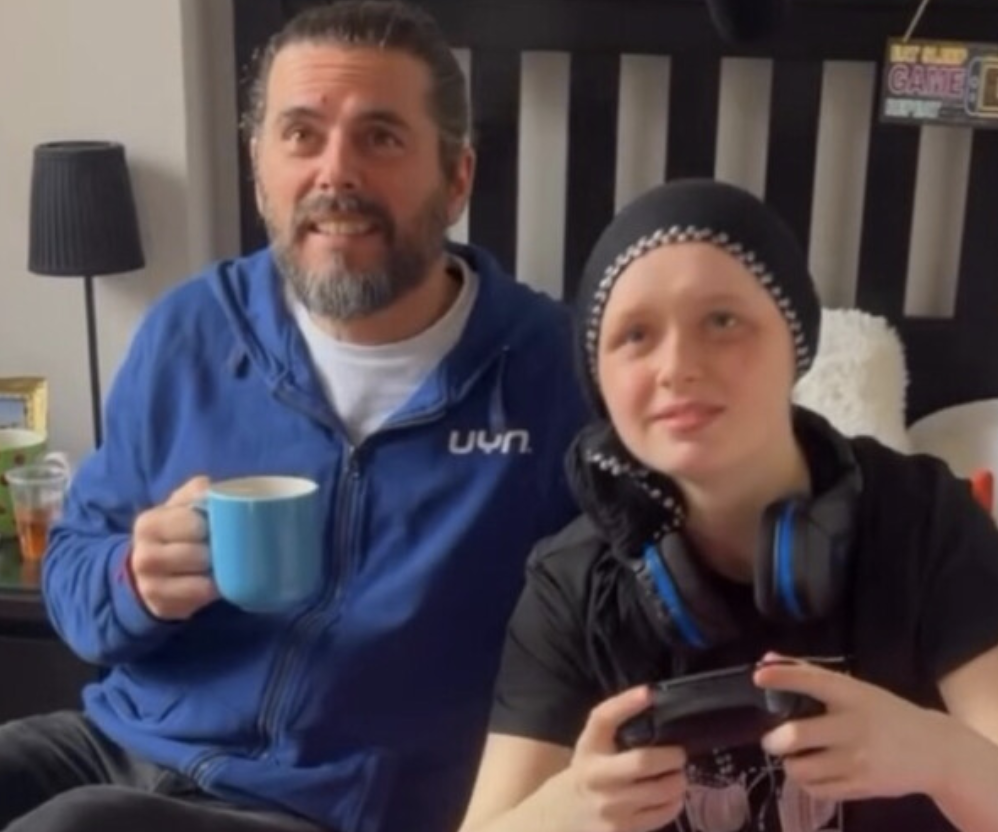
Erin Gavin:
One was the budget.
So in order to make a movie, as we know, we need money. So I literally I thought, I need to ask for help here, which is something I’m not very good at doing in terms of asking people to put together a GoFundMe and let’s do this.
That was a challenge for me to swallow my pride and be like I need to help.
It was amazing how many people came together and just wanted to help. It honestly made me well up and just feel so appreciative of everybody and everyone’s support.
The other challenge was to get crew together. So I was really lucky. I partnered with a company called Up Next studios.
We had a lot of help. People were just coming on board and helping, but naturally, sometimes people fall off and then you have to get somebody else in. That can be challenging in the final days, when someone drops out two days, I didn’t have too much of that, but it worked out in the end and who was meant to be on the movie was on the movie.

Joe Winger:
That’s a great way of thinking about it. Just to detail that out a little bit more, where, location-wise, where on the globe were you shooting?
Erin Gavin:
It was all shot in Scotland. I wrote it the second week in January, and we had the first cut by end of February.
So it was really rushed, really quick and really intense. We had to find locations really quick and we had to really narrow down those locations. I was in Scotland, so it made sense to just let’s roll. I was really lucky with the locations. I had friends just pull in together and be like, You can shoot here.”
So it all worked out really well.
Joe Winger:
How many days of production?
Erin Gavin:
Three days.
Joe Winger:
Three days in Scotland. You shot about a month and a half after you wrote it, is that more or less right?
Erin Gavin:
After I wrote it, I had about 3-4 weeks to pull all the crew together, locations together, everything together.
It was intense.
Then three days of shooting and then editing. Obviously the final cuts and then putting the music together.
But I’m really thankful for the team. Without the team, this would not be possible, and everybody’s support, it wouldn’t be possible.

Joe Winger:
Just going a little deeper on what you just said a second ago, two things to think about.
Number one, a lot of the people that are watching this interview right now have never been on a production set. The closest they’ve been is the movie theater.
Second thing is how many people out there, they’ve written something. But they may not have the courage or the audacity to actually get out there and shoot it, or as you brought up, to go out there and raise money because it costs money to do these things.
Do you have any advice or inspiration for someone out there who wants to be doing what you just accomplished, and they’re scared, hesitant, or nervously excited?
Erin Gavin:
I think you have to be very vulnerable. You have to put ego aside and let people read your script, polish it, get advice on it, make sure it’s as solid as it can be.
That’s hard to do when you pour your heart into this piece and you obviously this piece of paper has everything that you’ve just poured out onto it.
Then to give that [heartfelt script] to someone to be super critical is really hard, but that’s the first step and make sure it’s as good as it can be.
I would say community is key.
So perhaps maybe look at how you can narrow it down budget wise. So that’s your locations. Everything that costs money. And ask for help. Build that community. G to your local drama schools, go to your local film schools.
People want to film. People in the creative world, they want to be doing something.
So people do want to help. That’s what I would say, [at] home and in your community, ask for help, get the script solid. That would be the first two key things to be doing.
Joe Winger:
Good advice.
The title Gaming for Love, gaming is a big theme of the story.
I’d love to believe everybody in the world knows what gaming means. But just in case, can you tell us what gaming means?
What message do you hope the gaming community receives when they see the short film?
Erin Gavin:
We’re talking about computer gaming and [my short film] doesn’t shine it in a negative light.
I actually spoke to somebody last night who’s in the gaming world, for all the major companies and does computer programming in terms of the creative side of things. He said, they would love this story because it shows that this can help people in certain ways. It also has a community to it as well. Like most things in life have some negatives and some positives and everybody has their own opinion, right?
But for this shines it in a light that is true in terms of belonging to this story and how it helps someone.
Joe Winger:
That’s beautiful.
Erin Gavin:
Yeah, certainly this one has a twist at the end.
So I hope the viewers get to watch it and they’ll see exactly what I mean.
I also created a song about gaming which is also very true. A lot of gamers who have heard the song [feel] it’s so relatable.

Joe Winger:
Let’s talk about the cast. The performances are subtle and thoughtful and deep. I was surprised how much I was feeling in such a short period of time.
How did you find your cast? Any favorite moment that really stands out with you?
Erin Gavin:
I love that you felt that. We were really lucky because we just gelled and it made sense and it worked and not a lot of movies have that luck.
I reached out to a Gent who owns a theater school in Scotland. I said I need a young girl for one of the leads.
He happened to also have a Gent who teaches at the school who would’ve been the perfect, and he’d also been in like big shows like Outlander and whatnot.
So I thought, okay, he can act. I checked him out. He’s good. And she was great. And that all came from a gent called Rhys Donnelly who helped me with the casting. And also I reached out to a friend of mine who plays one of the other parts. Who I know is a great actor, Paul Donnelly, and he’s been in Outlander and a bunch of stuff.
So it, again, it was just a community aspect. It’s Oh, who knows who, and who can, how can I connect this and make this all work? And that’s how it happened.
Joe Winger:
What I love about what you just said is we are talking about the plot and the story and the gaming community earlier. You’re talking about the community behind the scenes of production.
I feel like whether it’s deliberate or not. You just found all these different communities to work together to highlight other communities, really a community effort in front of the scene, behind the scenes, in the story, all over the place.
Joe Winger:
Our audience knows we talk usually with chefs and winemakers and mixologists.
We’re talking about food and drink and travel. This topic is a little bit not what we usually talk about, but if you don’t mind, can we talk about food and flavor for a minute with you? Is that okay?
Erin Gavin:
Sure. All right.
Joe Winger:
You probably eat very healthy is my guess, but I could be wrong.
But when you’re indulgent, When you’re looking for flavor. What’s your favorite or what’s it? What’s a good guilty pleasure for you or what’s one of your favorite food and drink pairings?
Erin Gavin:
Being from Scotland, right? I was, Oh, have you tried haggis? Yeah, of course I tried haggis, but haggis is Most things in life, if it’s made well and it’s done it’s really good.
But it can also be the opposite, but I have to say, I do actually love haggis. But now I don’t really eat meat so much. But they do a really good like vegetarian option these days. So when I’m home, especially around Christmas time that would be my sort of go to but to pair with it, I’m going to be really sad here.
I like to drink milk with it. Most people like, yeah, this wine from this region. I’m like, nope, just milk. But but that’s when I go to at home. So when I’m in LA I actually, we like in LA, we have the best sushi. most extending sushi [00:13:00] restaurants. So sushi would be my go to when I’m in LA and definitely sake.
Joe Winger:
What’s the taste profile of haggis? What’s what’s it similar to?
What’s the aroma? What are we tasting? Will you take a bite?
Erin Gavin:
There’s another drink in Scotland. Sometimes I like to have Irn Bru with haggis. It sounds disgusting to a lot of people, but I like it. So it’s just like Irn Bro and haggis.
It’s an acquired taste.
Joe Winger:
Erin, what’s the best way to follow you and learn more about the short film, whether it’s a website, social media, something else, what’s the best way to follow your film festival journey and just what you’re up to with you yourself.
Erin Gavin:
Erin Gavin:
Oh, I appreciate that. On most of the social medias Erin Gavin Artist, like Instagram, Twitter and Facebook, TikTok.
Gaming For Love has its own pages on Facebook and Instagram.
It’s screening 22nd of July at 1pm at LA Shorts in Los Angeles.
Jamie Lee Curtis, Zoe Saldana, Thomasin McKenzie: Annual Oscar-Qualifying HollyShorts Film Festival celebrates their 20th anniversary
Zoe Saldana, Thomasin McKenzie, Jamie Lee Curtis: Annual Oscar-Qualifying® HollyShorts Film Festival celebrates their 20th anniversary
The Oscar® Qualifying HOLLYSHORTS FILM FESTIVAL returns for its much-anticipated 20th edition from August 8-18, 2024.
From over 6000 entries, over 400 films form this year’s anniversary program.
This Friday, July 12, HollyShorts will share the entire 2024 selection on YouTube.
Last year, the Academy® granted the festival their 4th OSCAR®-qualifying award for Documentary Short Film, this accolade joined their other three top awards, Best Short Film Grand Prize, Best Short Animation and Best Short Live Action. The winners of these awards will be eligible for consideration for a 2025 Academy® Award.
HollyShorts has also launched an inaugural Sports category with NBA Champion, Metta World Peace as the head judge, he is also a producer of a film to be premiered on opening night called, “With Love Charlie”. The festival’s sports category is led by producer Jessica Badawi and will include work from former NBA player and champion Matt Barnes premiering his documentary “Black Mark”, an episode from the NFL’s Seattle Seahawks series “The Sound of the Seahawks”, “The Syd & TP Show” with WNBA stars Theresa Plaisance and Sydney Colson, the show is produced exclusively by TOGETHXR, a media and commerce company founded by four of the world’s greatest athletes Alex Morgan, Chloe Sim, Simone Manuel and Sue Bidr. Also joining this new category will be Red Bull Media House’s “Life of Kai” featuring ESPY award winner Kai Lenny and “Race and Surf” from Selema Masakela, NBA’s Memphis Grizzlies “Marc Gasol: Memphis Made”, “ESPN 30 for 30” and two documentaries from the Italian powerhouse soccer team AC Milan including “Roots-Bennacer”.
Some of the documentary short films selected for the 20th edition include “Alok” directed by Alex Hedison and executive produced by Jodie Foster, “The Final Copy of Ilon Specht” directed by two-time Academy® Award winner Ben Proudfoot, Benjamin Alfonsi’s “Whitney Houston in Focus”, John Beder’s “How to Sue the Klan” and “XCLD: The Story of Cancel Culture” directed by Ferne Pearlstein and produced by Trevor Noah.
The star-studded live-action short film entries include “How Can I Help You” directed by Eliza Scanlen and starring Thomasin McKenzie, Marco Perego’s “Dovecote” with Zoe Saldana, “Dammi” starring Riz Ahmed and Isabelle Adjani, Ken Cheng’s “Summons” starring Jimmy O. Yang and Alexandra Shipp, “Midnight” from legendary Japanese director Takashi Miike, Louisa Connolly-Burnham’s “Sister Wives” featuring BAFTA Rising Star Award winner Mia McKenna-Bruce, “Hearts of Stone” with Noomi Rapace and Jessica Barden, “French” directed by Dylan Joseph and produced by OSCAR® nominee Kobi Mizrahi, “Vlog” starring and directed by Yvonne Strahovski in her directorial debut, “Edge of Space” directed by OSCAR® nominee Jean de Meuron, Russell Goldman’s “Burn Out” produced by Academy® Award winner Jamie Lee Curtis, “Fall Risk” featuring Victoria Pedretti, directed by Alex Martini, and produced by Bella Thorne, and Jim Cummings’ “Pretty Sad”, Yasmin Afifi’s BAFTA winning JELLYFISH AND LOBSTER and Tom Stuart’s GOOD BOY starring Ben Whishaw also join this fantastic lineup.
Among the animated short film entries are Nadia Hallgren and Jamie-James Medina’s “The Brown Dog” with voice performances by Steve Buscemi and the late Michael K. Williams, Paul Shammasian’s “An Angel on Oxford Street” narrated by Christopher Eccleston, “Play Again” directed by Emmy-nominated filmmaker Zen Pace, voiced by Benjamin Bratt and Eric Briche’s “Volcelest”.
Notable music videos include Shania Twain’s “Giddy Up!” and Nikki Lorenzo’s “Lista, directed by Bianca Poletti and starring Academy® Award nominee John Hawkes.
Additional noteworthy selections include Bella Thorne’s “Unsettled” featuring Chris Zylka, Eli Newman’s “Concrete” starring Ed Harris and Sophia Ali, Mackenzie Davis’ directorial debut “Woaca”, “If Not Now, When?” starring Kate Dickie, Hanna Gray Organschi’s “Merci, Poppy” with Victoria Pedretti, Danielle Baynes’ “The Dog” starring Kate Walsh, Francesca Scorsese’s “Fish Out of Water”, Richie Keen’s “The Grievance” with Rosie O’Donnell and Kevin Pollack, Mika Simmons’ “My Week with Maisy” starring Joanna Lumley, Annie Girard’s “One in the Chamber” starring Wilson Bethel, Hector Prats’ “Heaven is Nobody’s” starring Roger Guenveur Smith, Michael Perez-Lindsey’s “Will I See You Again?” featuring Richard Lawson, Blake Winston Rice’s “Tea”, co-directors Brit Crawshaw and Josh Hayward’s “Female Captive” starring Pauline Chalamet, Academy Award winner’s Chris Overton and Rachel Shenton’s Slick Films selected shorts include Rhys Chapman’s “Ryan Can’t Read” and Elizabeth Peace’s “The Golden Boy”, Benjamin Verrall’s “Shouting at the Sea” starring Harry Michell, Maia Scalia’s “His Mother”, Ethan Kuperberg’s “Paper Towels” starring Josh Brener, and “Swollen” directed by Roxy Sorkin.
HollyShorts is devoted to showcasing the best and brightest short films from around the globe, advancing the careers of filmmakers through screenings, networking events, and various panels and forums. The festival showcases the top short films produced in 40 minutes or less.
To view the full list of official selections visit http://www.hollyshorts.com
This year’s hybrid celebration of short films will take place in person, with screenings at the world-renowned TCL Chinese Theatre in Hollywood and virtually through the official festival streaming platform, BITPIX.
HollyShorts screenings will take place from August 8-18th at TCL Chinese Theatres, 6801 Hollywood Blvd., 3rd Level, Hollywood, CA, 90028, followed by the annual awards gala on August 18th.
For additional information and tickets visit https://hollyshorts2024.eventive.org/passes/buy
Secret of Caesar salad: John Robert Sutton Reveals on “Foods That Matter” Podcast
Secret of Caesar salad: John Robert Sutton Reveals on “Foods That Matter” Podcast
The Caesar salad was NOT invented in Italy!
The iconic dish, celebrating its 100th birthday this year, has roots in Tijuana, Mexico.

Foods ThatMatter John Robert Sutton
To celebrate, podcast host of CurtCo Media’s Foods That Matter and seasoned food archaeologist John Robert Sutton joined Juan José “Tana” Plascencia, the owner of Caesar’s Restaurant – home of the first Caesar salad – in person.
To eat some original recipe salad and chat about how, why, where, and by whom the dish came to be one of the most popular menu items in the US.
John and Tana’s intriguing conversation, starting with the recipe’s origins and ending with its worldwide prominence, is available on Foods That Matter on all major podcast platforms. You get a firsthand look at the backstory of Caesar salad, delving into all the rich flavors and history that made it such an important influence in the dining world.
Near or visiting Tijuana?
Join Tana at the centennial celebration at Caesar’s Restaurant on July 7, 2024. Plus, if you tell Tana that you listened to this episode of Foods That Matter – Celebrating 100 Years of Caesar Salad with the Origin Story that Starts in Tijuana, Mexico – he will give you the authentic recipe to take home!
About Foods That Matter:
Come along for a culinary thrill as Foods That Matter transports foodies to corners of the world through stories of adventure with food archeologist John Robert Sutton, also known as ‘The Indiana Jones of Food.’
John unlocks the secrets to the globe’s extraordinary cuisines, as he’s been doing throughout his travels in over 120 countries while enriching top grocery stores and Michelin-starred chefs with the finest ingredients and powering them with quality products.
The presenting sponsor of Foods That Matter is Watkins, award-winning extracts, spices & herbs, seasoning blends, grilling rubs & marinades, artificial dye-free baking decorations, and more crafted in the USA since 1868. The show is available on podcast platforms, including Apple Podcasts, Amazon Music, Spotify, YouTube and Goodpods.
About CurtCo Media:
CurtCo Media – with its talented producers and creative team – provides listeners with quality podcasts, featuring authoritative hosts, distinguished guests, and inspiring storytellers. The company presents many nationally-recognized series, covering topics such as scripted sci-fi (SOLAR), luxury (Cars That Matter, Travel That Matters, Wines That Matter) and others.
About the Author
Joe Wehinger (nicknamed Joe Winger) has written for over 20 years about the business of lifestyle and entertainment. Joe is an entertainment producer, media entrepreneur, public speaker, and C-level consultant who owns businesses in entertainment, lifestyle, tourism and publishing. He is an award-winning filmmaker, published author, member of the Directors Guild of America, International Food Travel Wine Authors Association, WSET Level 2 Wine student, WSET Level 2 Cocktail student, member of the LA Wine Writers. Email to: Joe@FlavRReport.comYou Might also like
-
LA’s Hottest new Foodie Destination, Westwood’s Wolfsglen, Serves up Fun Dishes and Cocktails
LA’s Hottest new Foodie Destination, Westwood’s Wolfsglen, Serves up Fun Dishes and Cocktails
So much good food!
Mushroom Arancini, Shrimp Toast, Steak Tartare,
Rigatoni Diavola, Cacio e Pepe,
Pan Roasted Pork Chop,
Homemade Peach Pie, Mango Sweet Rice, Deconstructed Strawberry Cheesecake
And drinks!
Razz-Mez-Tazz made of mezcal, mango, spicy bitter, agave and Tajin.
Black Gold prepared with Neft vodka, simply syrup, cucumbers, and activated charcoal
Wolfsglen, Westwood’s premier cocktail and dining destination, features New American cuisine and a hot Cocktail Scene. They’re getting a lot of rave reviews already!
Located at 1071 Glendon Avenue in Westwood, Wolfsglen is Westwood’s premier cocktail and dining destination featuring New American cuisine with a global Angeleno influence complemented by an array of expertly crafted cocktails.
Inspired by the legacy of John Wolfskill, a former state senator and pioneer rancher who played a pivotal role in the development of the land where Westwood Village now stands, Wolfsglen blends history, culture, and cuisine into a one-of-a-kind dining experience.

Sammy Espinoza – General Manager, Photography by Tonelson
Quietly opening its doors in November 2022, Wolfsglen is the brainchild of new hospitality team CFO Mark Garcia, Director of Operations Fernanda Hay, General Manager Sammy Espinoza, Chef Fidel Guzman, Sous Chef & Pastry Chef Moriah Castañeda, and Bar Manager Edward Ruiz.
Wolfsglen’s culinary journey begins with Chef Fidel Guzman
Wolfsglen’s culinary journey begins with Chef Fidel Guzman, whose New American seasonal menu embraces global Angeleno flavors, showcasing the finest seasonal and fresh ingredients.
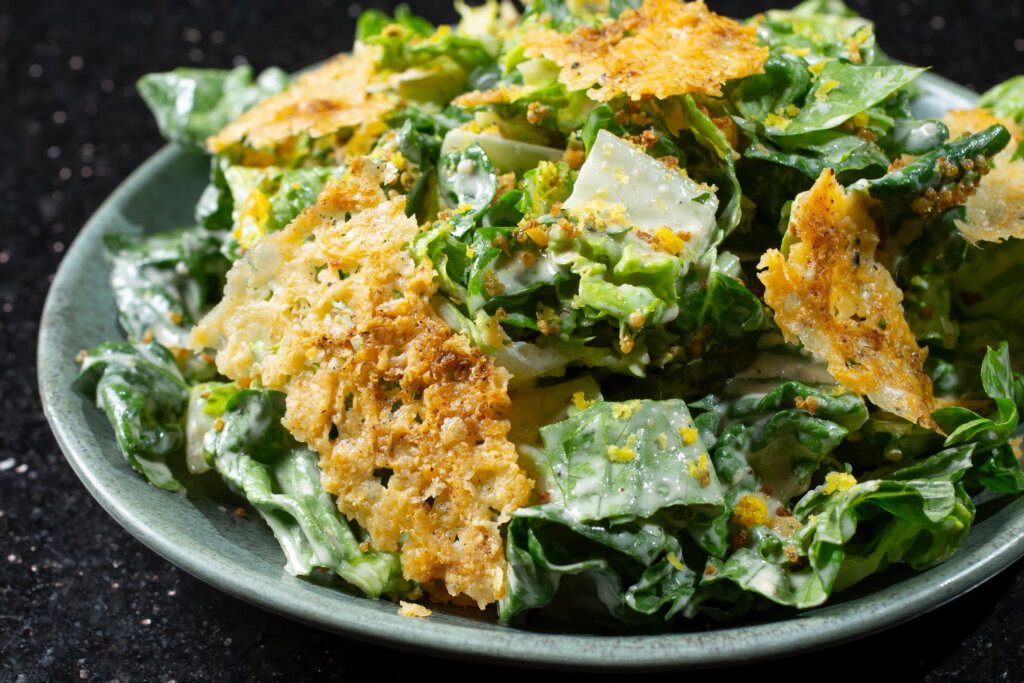
Photography by Tonelson
Starter Dishes
The To Start features delectable dishes like Brown Butter Labneh, Hummus with chili crisps, Burrata with grilled and flambé peaches, Esquites, Mushroom Arancini, Shrimp Toast, Steak Tartare, Shawarma, and Bone Marrow & Black Garlic, among others.
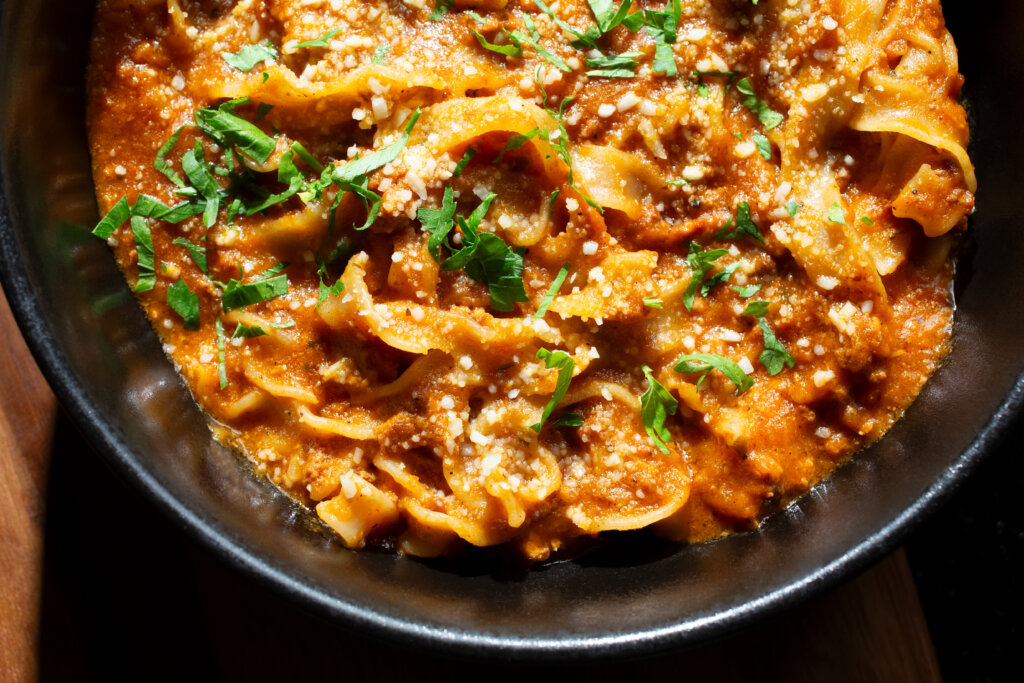
Photography by Tonelson
Handmade Pastas
Handmade Pastas take center stage with Chef Fidel’s Rigatoni Diavola, Cacio e Pepe, and Bolognese, each prepared to perfection.

Photography by Tonelson
Mouthwatering Entrées
The Entrées boast mouthwatering selections such as Pan Roasted Pork Chop with a togarashi-whiskey glaze, Steak Frites, Wolfsglen Burger with candied bacon, spicy aioli, and arugula,Beyond Burger, Roast Chicken with aji verde and pea tendrils, Seared Salmon served with a pineapple ginger glaze and miso potato purée, Seared Striped Bass, and Cauliflower Steak with curry and raisin chutney.
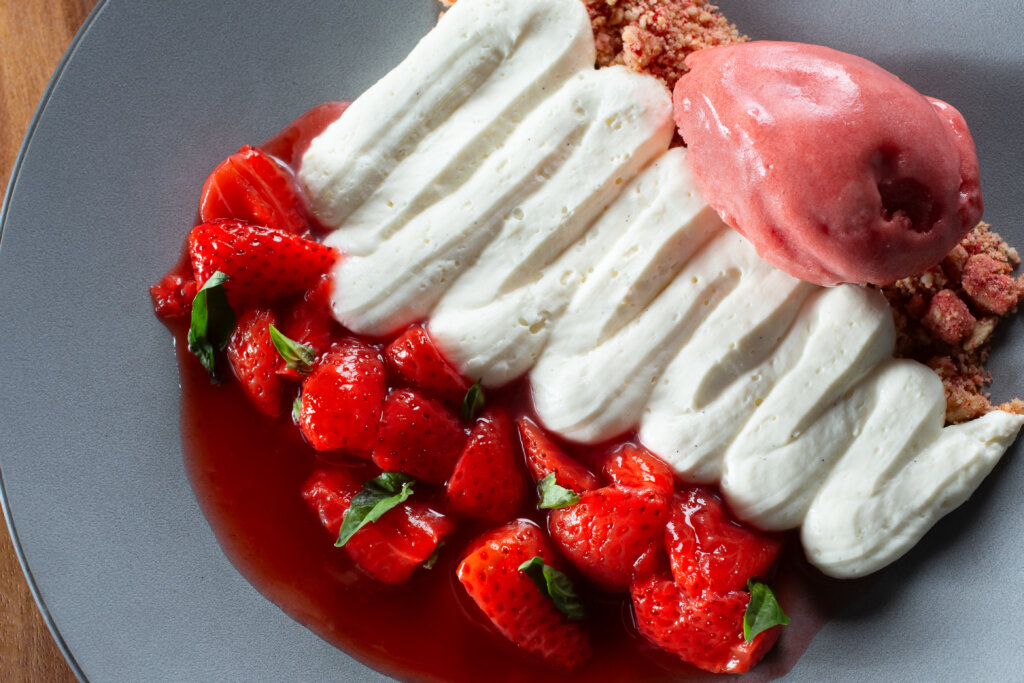
Photography by Tonelson
Leave room for dessert
Don’t forget to leave room for dessert! Culinary duo, Chef Fidel Guzman and Sous Chef & Pastry Chef Moriah Castañeda present an array of tantalizing options, including Homemade Peach Pie, Mango Sweet Rice, Deconstructed Strawberry Cheesecake, and Ricotta Donuts with blueberry compote and lemon curd.

Photography by Tonelson
Wolfsglen’s bar program
Wolfsglen’s bar program, originally created by Fernanda Hay, now under the expert guidance of Bar Manager Edward Ruiz, offers a diverse range of perfectly balanced and playful cocktails. Signature creations include the Razz-Mez-Tazz made of mezcal, mango, spicy bitter, agave and Tajin, Purple Rain comprised of gin, blueberry purée, lemon, and butterfly pea flower, Geisha’s Kiss with Masumi sparkling sake, elderflower liqueur, and lychee purée, and Black Gold prepared with Neft vodka, simply syrup, cucumbers, and activated charcoal, with even more to try.
In addition, Wolfsglen also offers specially select White Wine, Red Wine, Rosé, Sparking, and Beer + Cider.
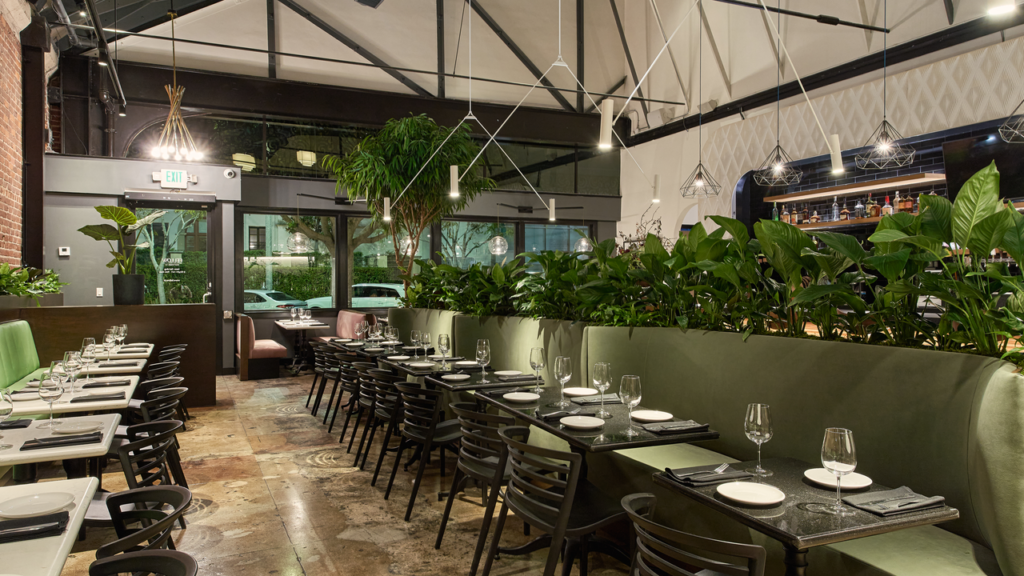
Courtesy of Wolfsglen
Wolfsglen’s is the ideal destination
Nestled in a historic two-story building developed in the 1930s, Wolfsglen showcases beautiful high ceilings, modern design, a lush patio for al fresco dining, and private event spaces. It is the ideal destination for lunch, dinner, drinks with friends, intimate gatherings, or special events. With its rich history, elegant ambiance, and mouthwatering cuisine, Wolfsglen promises an unforgettable dining and drinking experience for everyone!
Social Media: Follow Wolfsglen on Instagram @wolfsglenwestwood
Wolfsglen is open every Sunday and Monday from 5:00 pm to 10:00 pm, every Tuesday, Wednesday, and Thursday from 11:30 am to 12:30 am, every Friday from 11:30 am to 1:00 am, and every Saturday from 5:00 pm to 1:00 am.
Wolfsglen offers Howlin Hour every Tuesday through Friday from 2:00 pm to 6:00 pm and Late-Night Howlin Hour every Friday and Saturday from 11:00 pm to 12:30 am.
For more information about Wolfsglen or to make reservations, please call 310.208.1071 directly or visit www.Wolfsglen.com.
Post Views: 1,269 -
Los Angeles’ A.O.C. Welcomes Celebrated Guest Sommelier Bobby Stuckey MS Feb 28
Los Angeles’ A.O.C. Welcomes Celebrated Guest Sommelier Bobby Stuckey MS Feb 28
Caroline Styne and Suzanne Goin welcome the co-owner of Frasca Food & Wine and Scarpetta Wines to A.O.C. on 3rd Street for an evening showcasing his boutique wines.
Caroline Styne and Chef Suzanne Goin will host a special evening at A.O.C. on Wednesday, February 28, 2024, featuring James Beard Foundation award-winner Bobby Stuckey of Boulder’s Frasca Food & Wine and Scarpetta Wines.
Bobby will serve as Guest Sommelier, showcasing the imported wines of Murva and his own Scarpetta Wines.
Caroline Styne has curated wine flights to be enjoyed during dinner, and guests can also choose from featured bottles from Murva or the Scarpetta wine library.
Additionally, A.O.C. will offer a selection of Italian cheeses for wine pairings. The menu will be à la carte, and reservations for the event are encouraged.
“I am beyond excited to have my idol,
Bobby Stuckey, working the floor with us at A.O.C.”
Caroline Styne
“His charisma and dedication to outstanding hospitality are inspirational.”
This evening presents a rare opportunity to meet Bobby Stuckey, a highly talented and charismatic figure in the hospitality industry.
WHEN:
Wednesday, February 28, 2024
5:30 – 10:00 p.m.
WHERE: A.O.C., 8700 W. 3rd Street Los Angeles, California 90049
Phone: 310.859.9859
Bobby Stuckey began his distinguished career in restaurants in his home state of Arizona, working his way from dishwasher to management, establishing his position as one of the leaders in the hospitality industry.
He joined the staff of The Little Nell restaurant in Aspen as a sommelier in 1995. During his five-year tenure, The Little Nell received numerous awards for wine and service, including Gourmet’s “Best Wine Service” Award; Mobile Travel Guide’s Five Star Hotel and Restaurant Rating; Wine Spectator’s Grand Award; and a nomination from the James Beard Foundation for Outstanding Wine Service.
In 2000, Stuckey moved west to work with world-renowned chef Thomas Keller at The French Laundry in Yountville, California.
Within his first year, Stuckey led the acclaimed restaurant’s team to earn the James Beard Foundation’s Outstanding Wine Service award and San Francisco Magazine recognized him as “Wine Director of the Year.”
The French Laundry received the James Beard Foundation Award for Outstanding Restaurant Service in 2003. It was during his tenure at The French Laundry where Bobby met his future business partner, chef Lachlan Mackinnon-Patterson.
With the vision of opening a neighborhood restaurant reminiscent of the Italian frascas they had visited in Italy’s Friuli-Venezia Giulia region, Stuckey and Mackinnon Patterson opened their first restaurant, Frasca Food and Wine, in August 2004, in Boulder, Colorado. Having researched and traveled throughout Italy many times, both were deeply inspired by this region in particular — the international influences of its cuisine, the profusion of local ingredients in its rustic yet elegant dishes, its passionate relationship between food and wine, and the gracious hospitality of the locals. Receiving his Master Sommelier Diploma in 2004, Stuckey has been bestowed with some of the restaurant and wine industrys’ highest honors such as James Beard Foundation nominations for Outstanding Wine and Spirits Professional, Outstanding Wine Service, and won the prestigious award for Outstanding Wine Service in 2013.
In 2007, Stuckey and Mackinnon-Patterson launched Scarpetta Wines to produce Friulian white wines. They now produce over eight varietals. In January 2011, Stuckey and Mackinnon-Patterson opened Pizzeria Locale Boulder, a full-service, contemporary pizzeria inspired by the traditional pizzerias of Naples, Italy located adjacent to sister restaurant Frasca with a similar attention to hospitality in a contemporary, laid back, interactive atmosphere. The partners also own and operate fast-fine versions of Pizzeria Locale Denver, with four locations in the Denver Metro area.
In the fall of 2017, Stuckey and Mackinnon-Patterson, along with partners Peter Hoglund, and Continuum Partners’ Mark Falcone, opened Tavernetta in Denver’s Union Station neighborhood. Located directly off the Union Station train platform, Tavernetta is inspired by Italy’s vast culinary traditions, with a menu that celebrates authentic regional classics from across the entire country in an approachable and welcoming environment. In December 2019, they opened Sunday Vinyl, a European-inspired wine bar & restaurant dedicated to providing the highest quality analog listening experience, adjacent to Tavernetta in downtown Denver.
Frasca Food and Wine celebrated 15 years in 2019 and the same year, under Bobby’s direction, the restaurant won the 2019 James Beard Foundation Award for Outstanding Service (changed to Outstanding Hospitality for the 2020 Awards thanks to Bobby’s recommendation).
ABOUT SCARPETTA WINES:
Scarpetta — The drivers of Scarpetta Wine are Bobby Stuckey M.S. and Lachlan Patterson former chef de partie at The French Laundry. They conspired to open a restaurant in Boulder, Colorado and thanks to a fateful trip to the Alpine region of Italy they had their inspiration… the cuisine and culture of Friuli. Always digging deeper for Friulian inspiration, Bobby and Lachlan travel to the region several times a year, even taking their entire staff along for a week of eating, wine tasting and general Friuli-worship every summer. It was only natural that when Bobby and Lachlan dreamt about starting their own wine label they looked first to the beautiful whites of Friuli, and Scarpetta was born. Murva – Moraro and Mariano del Friuli, Isonzo – The wines produced by Alberto Pelos at Murva are pure and vibrant. Alberto, who spent many years as winemaker at Vie di Romans, describes the vineyard soils that comprise Murva’s vineyards as dolomitic, with small pebbles rich in iron and aluminum, and a high sand and clay content (feretto). He farms 4 hectares of vineyards that he owns, and 1 hectare that he farms in the center of town which is part of a community outreach program to support troubled youth. The Murva wines have distinct salinity and energy that are not to be missed by any lover of Northern Italian whites.
ABOUT THE LUCQUES GROUP:
With the opening of Lucques, their flagship restaurant, in 1998, James Beard Foundation award-winning Chef/Author Suzanne Goinand award-winning Restaurateur Caroline Styne planted the seeds for The Lucques Group, a Los Angeles hospitality company that comprises two fine dining restaurants – A.O.C. in both Los Angeles and Brentwood. Along with these culinary enterprises, the company also owns the Larder Baking Company and oversees Hollywood Bowl Food + Wine, which curates all the food and beverage outlets at L.A.’s iconic music venue. The duo also operates two new restaurants – Caldo Verde and Cara Cara, and the new Dahlia cocktail bar at the Downtown L.A. Proper Hotel. The Lucques Group is dedicated to seasonally influenced cooking and focuses on sourcing local, organic produce from which Goin creates soulful dishes that are bold in flavor, vibrant, layered and complex.
Post Views: 1,838 -
AOC Brentwood Presents La Festa Della Donna March 11 with Italian Winemakers Mariarita Grasso, Alice Bonaccorsi & Restaurateur/Author Shelley Lindgren
AOC Brentwood Presents La Festa Della Donna with Italian Winemakers Mariarita Grasso, Alice Bonaccorsi & Restaurateur/Author Shelley Lindgren on 3/11
La Festa della Donna is coming to Brentwood!
Caroline Styne and Suzanne Goin have invited Italian Winemakers Mariarita Grasso, Alice Bonaccorsi and Restaurateur/Author Shelley Lindgren to celebrate the Italian Festival of Women benefitting Regarding Her on Monday, March 11.
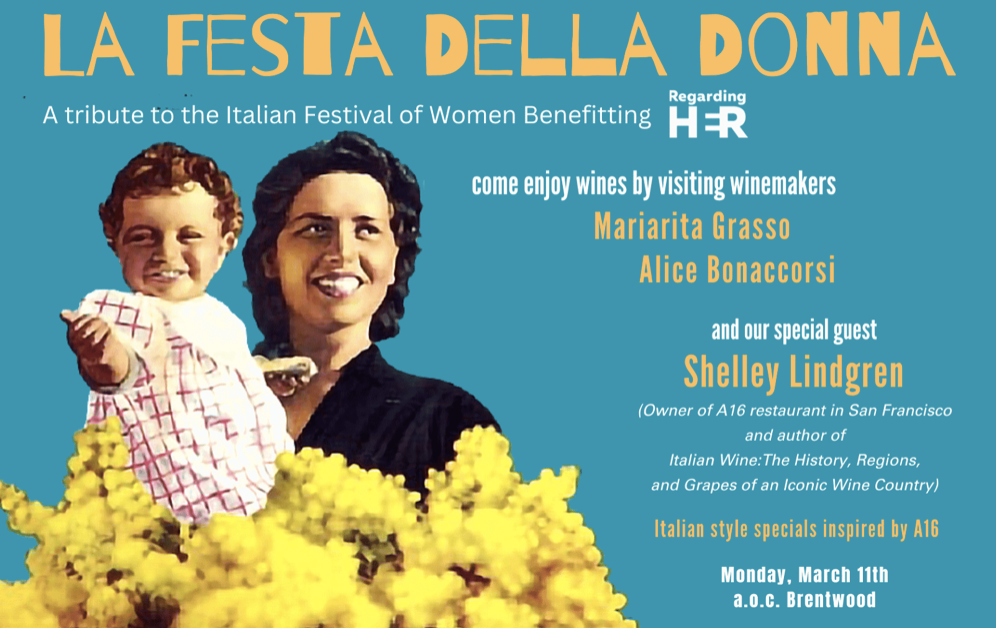
AOC Brentwood Presents La Festa Della Donna March 11 with Italian Winemakers Mariarita Grasso, Alice Bonaccorsi & Restaurateur/Author Shelley Lindgren
Join these five talented women and enjoy Suzanne’s Italian-style specials and flights by the winemakers curated by Caroline Styne.In celebration of the Italian Festival of Women in March, Restaurateur Caroline Styne and Chef Suzanne Goin present La Festa della Donna on Monday, March 11, 2024, at AOC in Brentwood.
Join these five talented women and enjoy Italian-style specials
Caroline has invited her special guests Mariarita Grasso of Azienda Agricola Filippo Grasso and Alice Bonaccorsi of Azienda Agricola Alice Bonaccorsi, Italy. Also in attendance is favorite Italian wine advocate Shelley Lindgren, owner and wine director of A16 Restaurant (in San Francisco and Oakland) and author of her latest book, “Italian Wine: The History, Regions, and Grapes of an Iconic Wine Country.”
The Festa della Donna is an Italian tradition observed yearly on March 8, coinciding with International Women’s Day.

It serves as a tribute to the remarkable contributions of women in social, economic, cultural, and political spheres. Central to the celebration is the custom of presenting women with yellow mimosa flowers, revered as emblems of resilience, beauty, and elegance. Festivities encompass various activities, including gatherings to honor women’s accomplishments and advocate for their continued pursuit of equality and recognition. The Mimosa flower has symbolized the Festa della Donna in Italy since the 1940s, symbolizing affection and appreciation when gifted to women.

Caroline is curating flights of wine from these two Sicilian winemakers as well as Lindgren’s own Tansey Wines, and Suzanne is creating specials to complement them. 10% of wine flights and menu special sales will benefit Regarding Her programs. All five women will be present to meet guests. Local bookseller Now Serving will be on hand with copies of Shelley’s book, and A.O.C. will offer a selection of the featured wines for retail purchase.
Reservations may be made on OpenTable Experience.
Suzanne’s menu of specials inspired by Shelly Lindgren and Nate Appleman’s A16 Cookbook is listed below; select photos of the winemakers and vineyards HERE; photos courtesy of A.O.C.
La Festa della Donna
menu of specials inspired by
Shelley Lindgren and Nate Appleman’s A16 COOKBOOK
Monday, March 11, 2024
A16 ANTIPASTO: liver terrina with marinated olives, giardiniera,
crostini, and assorted cured meats $26
roasted asparagus with walnut cream and pecorino tartufo $24
paccheri with fresh sardines, olives, capers, and breadcrumbs $27
braised halibut with pistachios, preserved meyer lemon, and capers $32
pork loin spiedino with pine nut, garlic, and currant soffritto $28
short ribs alla Genovese MP
potato torta with mozzarella, prosciutto, and pecorino $18
walnut and chocolate semifreddo with chestnut shortbread $18
WHEN:
Monday, March 11, 2024
5:00 – 10:00 p.m.
Reservations via OpenTable Experience
WHERE:
A.O.C. in Brentwood
11648 San Vicente Boulevard
Los Angeles, CA 90049\
310.806.6464
ABOUT AZIENDA AGRICOLA FILIPPO GRASSO:
Azienda Agricola Filippo Grasso is a fourth-generation family-owned winery nestled on the north side of Mount Etna in Sicily. Since 2006, they’ve been crafting their own wines. Situated in Contrada Calderada, their vineyards thrive on soils rich in large volcanic rocks, capturing and retaining the sun’s warmth, shielding the vines from chilly mountain nights. With six hectares devoted to native Etna grapes like Carricante, Catarratto, Minella, Nerello Mascalese, and Nerello Mantellato (also known as Cappuccio), Filippo Grasso embodies a deep commitment to the region’s grapes, aiming to faithfully translate Etna’s terroir into every bottle. Their unoaked wines reflect the purity of these indigenous varieties. Beyond vineyards, the estate cultivates olive oil from 100 century-old trees and boasts diverse flora, fostering biodiversity for healthier vines. While not certified organic, the winery operates daily with reverence for nature. As they refine their craft, the Grasso family eagerly anticipates sharing their Etna wines with a broader audience.
ABOUT AZIENDA AGRICOLA ALICE BONACCORSI:
The story of Bonaccorsi Winery begins in Valcerasa, the Cherry Valley, where Alice’s father’s vineyard was situated on Mount Etna’s eastern slope, yielding their flagship wine, Valcerasa. Today, they operate in Randazzo, on the mountain’s northern side, having relocated to Croce Monaci in 2000, where they’ve expanded their land from 3 to around 18 hectares over two decades. Committed to organic practices, Bonaccorsi is ICEA certified, prioritizing biodiversity, maintaining natural vegetation, and preserving fruit trees for ecological balance. Their vineyards boast 80-year-old plants, cared for using copper-based sulfur, ensuring grapes are free from chemical residues and rich in natural yeasts vital to winemaking. In the cellar, they embrace a natural approach, eschewing chemical additives. The infusion of fresh, innovative ideas from their daughters is pivotal, invigorating Bonaccorsi with new energy while preserving its distinctive coherence.
ABOUT SHELLY LINDGREN:
Shelley Lindgren is the wine director and owner of San Francisco’s Italian restaurant A16, which has locations in Oakland, California and Tokyo, Japan. In February 2024, she opened La Pala – serving pizza al taglio and panini from San Francisco’s Ferry Building. She has received the James Beard Award for Outstanding Wine Program; has received the 2023 Slow Wine Fair Award for Best Selection of Good, Clean, and Fair Italian Wine; and has been knighted by the Italian government, receiving the prestigious “Cavaliere dell’Ordine Della Stella Italia” (Dott.ssa) distinction for her professional dedication to Italian wine. Shelley’s third book, Italian Wine – The history, regions and grapes of an iconic wine country was recently released and available internationally. Shelley’s work has been featured in The Wall Street Journal, Food & Wine, Punch, San Francisco Chronicle, and many other publications. Shelley started a winery called Tansy Wines in 2021 with Kitty Oestlien – inspired by Italian varietals of Northern California as well as Pinot Noir and an upcoming Cabernet Sauvignon all from organically grown, single vineyards. She served on the board of La Cocina, the Guild of Sommeliers, and Slide Ranch and is a member of Les Dames d’ Escoffier. She lives in San Francisco with her husband and two sons.
ABOUT THE LUCQUES GROUP:
With the opening of Lucques, their flagship restaurant, in 1998, James Beard Foundation award-winning Chef/Author Suzanne Goin and award-winning Restaurateur Caroline Styne planted the seeds for The Lucques Group, a Los Angeles hospitality company that comprises two fine dining restaurants – A.O.C. in both Los Angeles and Brentwood. Along with these culinary enterprises, the company also owns the Larder Baking Company and oversees Hollywood Bowl Food + Wine, which curates all the food and beverage outlets at L.A.’s iconic music venue. The duo also operates two new restaurants – Caldo Verde and Cara Cara, and the new Dahlia cocktail bar at the Downtown L.A. Proper Hotel. The Lucques Group is dedicated to seasonally influenced cooking and focuses on sourcing local, organic produce from which Goin creates soulful dishes that are bold in flavor, vibrant, layered and complex.
Post Views: 1,130



























